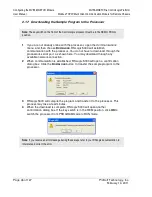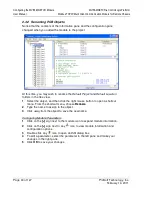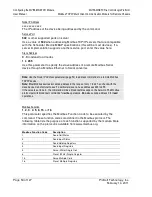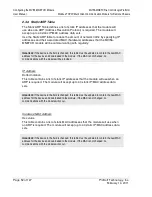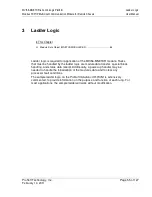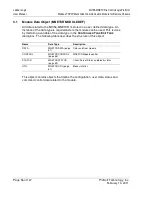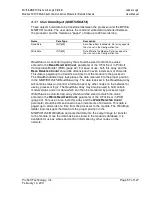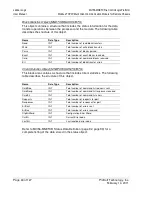
MVI56-MNETCR ♦ ControlLogix Platform
Configuring the MVI56-MNETCR Module
Modbus TCP/IP Multi Client Communication Module for Remote Chassis
User Manual
ProSoft Technology, Inc.
Page 49 of 127
February 14, 2011
Poll Interval
0
to
65535
This parameter specifies the minimum interval to execute continuous commands
(
Enable
code of
1
). The parameter is entered in tenths of a second. Therefore, if
a value of
100
is entered for a command, the command executes no more
frequently than every 10 seconds.
Reg Count
Regs:
1
to
125
Coils:
1
to
800
This parameter specifies the number of 16-bit registers or binary bits to be
transferred by the command.
Functions 5 and 6 ignore this field as they apply only to a single data point.
For functions 1, 2, and 15, this parameter sets the number of bits (inputs or
coils) to be transferred by the command.
For functions 3, 4, and 16, this parameter sets the number of registers to be
transferred by the command.
Swap Code
N
ONE
S
WAP
W
ORDS
S
WAP
W
ORDS
&
B
YTES
S
WAP
B
YTES
This parameter defines if and how the order of bytes in data received or sent is to
be rearranged. This option exists to allow for the fact that different manufacturers
store and transmit multi-byte data in different combinations. This parameter is
helpful when dealing with floating-point or other multi-byte values, as there is no
one standard method of storing these data types. The parameter can be set to
rearrange the byte order of data received or sent into an order more useful or
convenient for other applications. The following table defines the valid
Swap
Code
values and the effect they have on the byte-order of the data.
Swap Code
Description
N
ONE
No change is made in the byte ordering (1234 = 1234)
S
WAP
W
ORDS
The words are swapped (1234=3412)
S
WAP
W
ORDS
&
B
YTES
The words are swapped, then the bytes in each word are swapped
(1234=4321)
S
WAP
B
YTES
The bytes in each word are swapped (1234=2143)
These swap operations affect 4-byte (or 2-word) groups of data. Therefore, data
swapping using these
Swap Codes
should be done only when using an even
number of words, such as when 32-bit integer or floating-point data is involved.


